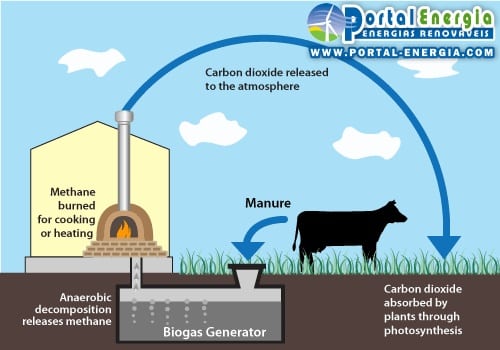Biogas is a type of gaseous mixture of carbon dioxide and methane that is produced naturally in an anaerobic environment by the action of bacteria on organic matter, which is fermented within certain limits of temperature, moisture content and acidity.
Like all energy sources Biogas energy also has advantages and disadvantages. Resulting from its use in the production of electrical energy.
Biogas can be obtained from agricultural waste, or even from animal and human waste. Unlike alcohol extracted from sugar cane and oils extracted from other crops, it does not compete with food production.
It is a gaseous fuel with a high energy content similar to natural gas, and consists mainly of short and linear chain hydrocarbons.
It can be used to generate electrical, thermal or mechanical energy on rural properties, contributing to lower production costs.
For example, in Brazil, rural biodigesters have been used mainly for rural sanitation, with biogas and biofertilizers used as by-products.
Biogas energy can be produced artificially using equipment called Anaerobic digestion.
Methane, the main component of biogas, has no odor, color or taste, but other gases in it give it a slight unpleasant odor.

Advantages of biogas energy
Replacing LPG, an imported petroleum derivative;
Convenience and safety for the consumer, the inherent advantages of piped gas;
It is not necessary to purify it, but only to remove the condensed liquids along the collection and distribution routes;
The adapted equipment showed reasonable performance;
Housewives who use gas were happy with the change because the flame is very clean, leaving no soot residue on the pans.
Disadvantages of Biogas Energy
The amount of energy generated from biogas is not constant, and varies throughout the production period;
Depending on community guidelines on landfills, the deposition of biodegradable waste in landfills will be reduced in the future, so biogas recovery facilities in landfills will have a limited time period of existence;
High payback period on investment.





